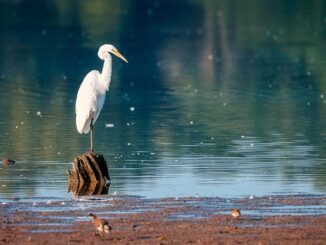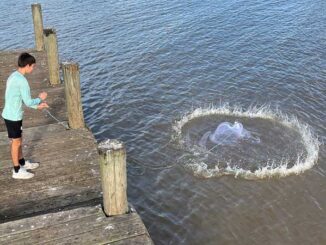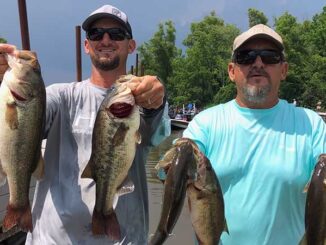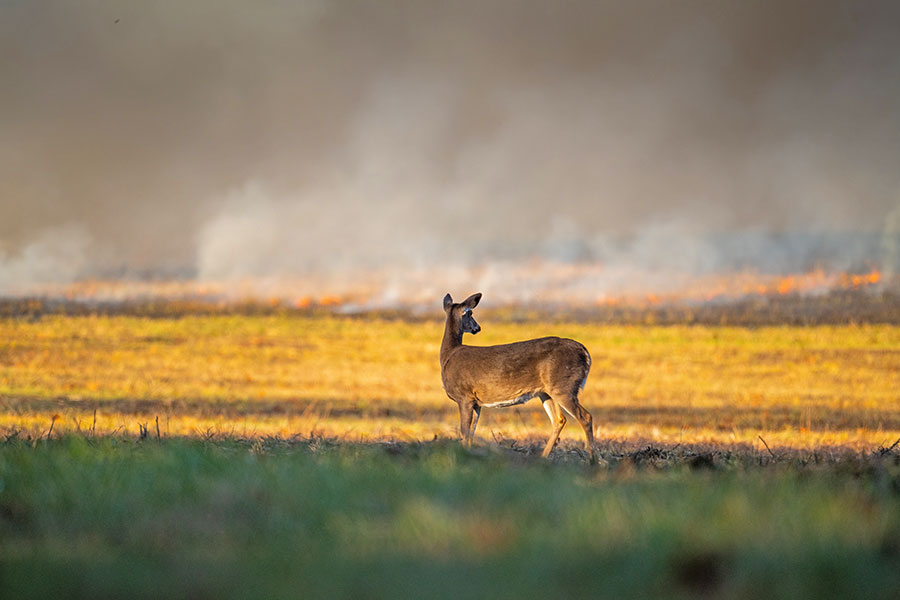
The use of fire to improve habitat is an incredible tool; however, it must be used with an abundance of caution.
When venturing into the world of prescribed burns, it is imperative that all appropriate training is conducted and all safety measures are followed to ensure that the fire is controlled and no persons are injured or property damaged. This was a lesson I learned the hard way in 1984.
We had a particularly dry December in Zachary and my best friend and I were enjoying setting off neighborhood fireworks. We noticed a bottle rocket fall into a neighbor’s field and in the dark we quickly saw small flames in the tall grass. We were able to jump the fence and extinguish the fire quickly. The following morning, we set off the remaining bottle rockets and again one ventured into the adjacent 50-acre field. Within what seemed like a split second the flames were six feet tall and rolling across the pasture.
This resulted in a huge response by local fire departments and police officers while my friend and I hid in the house. By the end of the morning the entire field had burned, but the local fire department was able to secure the field edges and no homes were damaged and no one was injured. By April of that year, the field was amazing and filled with beautiful green grass. The neighbor’s cattle could be seen happily grazing on it. Although the result was pleasing to all parties involved, the method in which we got there could have been devastating to not only property but to people as well. I have heard other stories of makeshift pasture burns that resulted in lost tractors, barns and sheds.
The entire ecosystem
Every part of the ecosystem depends on the habitat it resides in to provide life. The smallest of birds and rodents, to the largest of big game animals and predators, rely on Mother Nature to provide an environment where they can survive and even thrive. Occasionally, man can intercede and improve that habitat using prescribed burning.
The forest floor over time accumulates leaves, pine needles and debris that can prevent the growth of high-quality natural browse plants for deer, quail and turkey. This practice of burning also reduces forest floor fuel in the case of accidental or intentional fires that can be devastating to entire ecosystems. The recent Louisiana Tiger Island Fire was an example of enormous amounts of forest floor fuel and drought conditions that led to an incredible fire that impacted over 30,000 acres of pine plantation and hardwood stands.
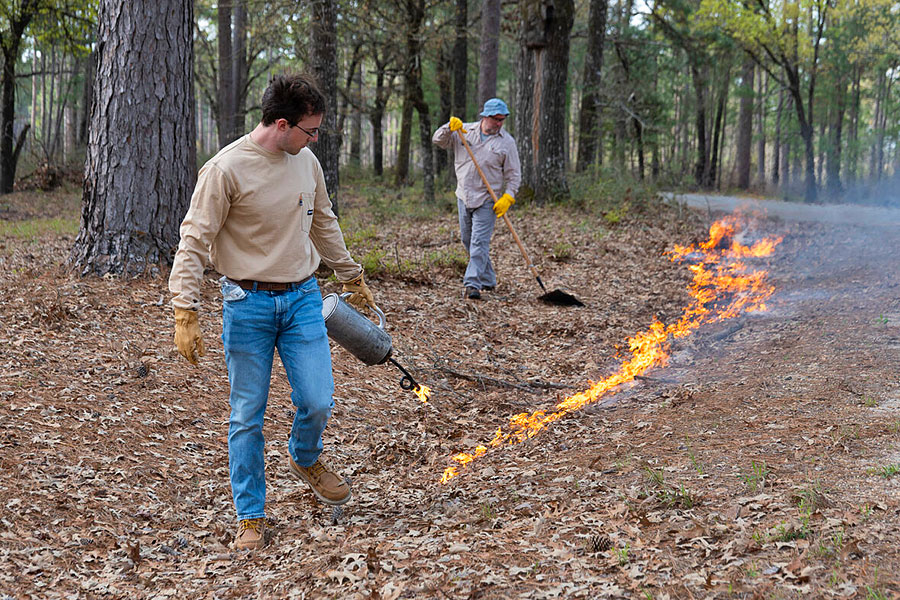
The Louisiana State University Agricultural Office conducts training for those who wish to become more educated and have a desire to become certified in conducting controlled burns. The LSU AG Burn Certification Course is provided around the state. It is a three-day course of classroom and field time and covers all aspects of the prescribed burn process. The class covers fire fuels, fire behavior, fire weather, fire ecology, burning techniques, smoke management, fire lane establishment, burn planning and the details of Louisiana’s Prescribed Burner Program. That’s good information to know if you have agricultural or hunting land that needs to be improved.
In order to meet the requirements to be a prescribed burner, you must receive formal on-the-job training or attend the LSU AG course, conduct five burns as the supervising professional, use a prescribed burn plan, adhere to smoke management guidelines, meet the burn notice directives, and pass the certification test with a score of 70% or higher. More information can be located at www.ldaf.la.gov/land/fire/prescribed-burning.
Whitney Wallace (WWallace@agcenter.lsu.edu) of the LSU AG Center noted that training dates and locations around the state can be accessed through her or via the LSU AG website (www.lsuagcenter.com). Wallace said the training is in accordance with the requirement for the state and the Department of Forestry to work to improve agricultural lands and wildlife habitat.
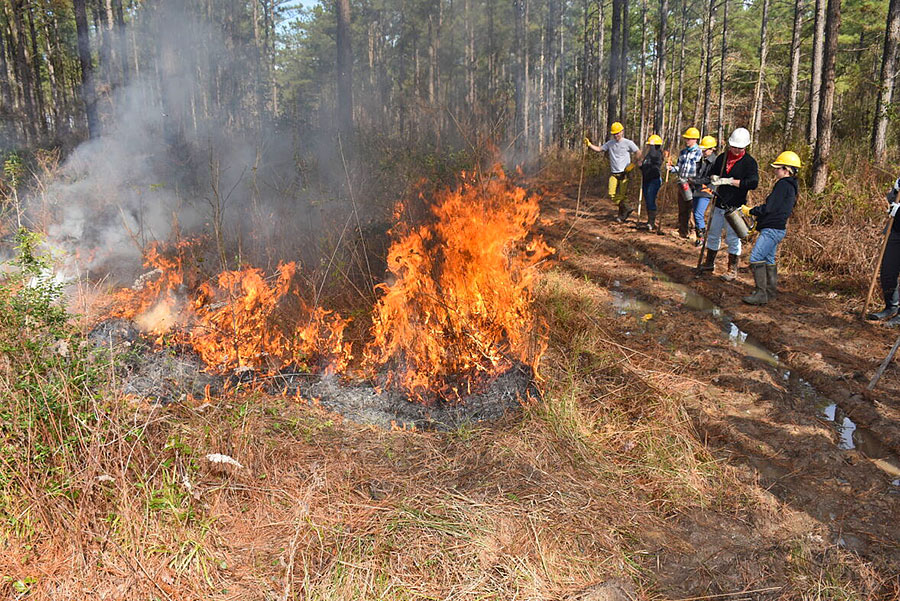
Specific information
The training covers extremely specific information about the type of fire techniques used, such as backfire, strip head fire, flank fire and spot fires in the process of conducting a very controlled and planned burn. To keep this process as safe as possible there are many factors that are considered in planning, such as boundaries, plow lines, forest or field fuel, the month, the last rain over ½-inch, fuel moisture, wind direction, wind speed, air temperature, equipment and manpower.
A great deal of planning and preparation should go into each prescribed burn. The result can significantly improve agricultural assets and wildlife habitat.
In the aftermath of a prescribed burn, you will see an increase in nitrogen in the soil, which increases fertility. This will improve the growth of natural forest floor plants and natural grasses and vegetation beneficial to wildlife. Fire produces an environment that results in the growth of new plant life that harbor insects and produces seeds that are beneficial to birdlife such as quail, turkeys and songbirds. This also benefits in growing a quality food source for small game animals and large game animals. The accelerated growth of fresh green vegetation also produces protective ground cover. Prescribed burning can also reduce the chigger and tick population.
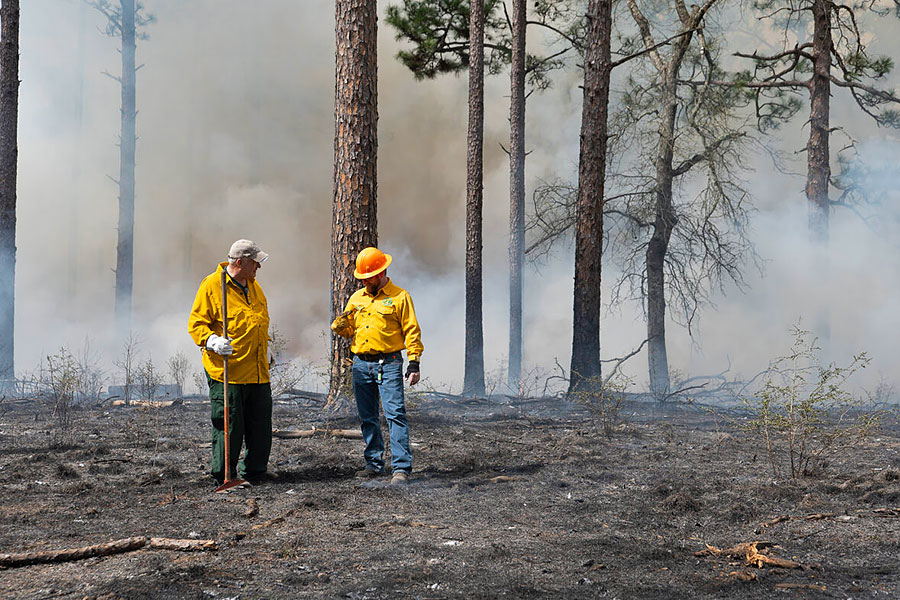
Historically, fires have replenished and refurbished the wildlife habitat. Native Americans used fire to improve grazing lands and natural grasses. I am sure most of us have passed an area of grassland or a forested area that has recently burned. Months later you return to find that the area that burned and was charred and black is now a deep forest green and noticeably healthier than the grassland or vegetation surrounding it. It is a natural way for the cleaning of the earth to result in a healthier habitat for all creatures that live among the grasslands, woodlands and hills.
After the burn, there is a regrowth of shrubs and herbaceous plants. This new growth is softer and more palatable for wildlife. The new growth also promotes flowers, seeds and new fruits that are beneficial to smaller animals, birds and insects. This burning also removes non-native habitat and allows for the regrowth of native plants on the forest floor or native grasslands.
A proper plan and proper training are imperative to the prescribed burning process to not only improve habitat but protect from the dangers of an out-of-control fire.
